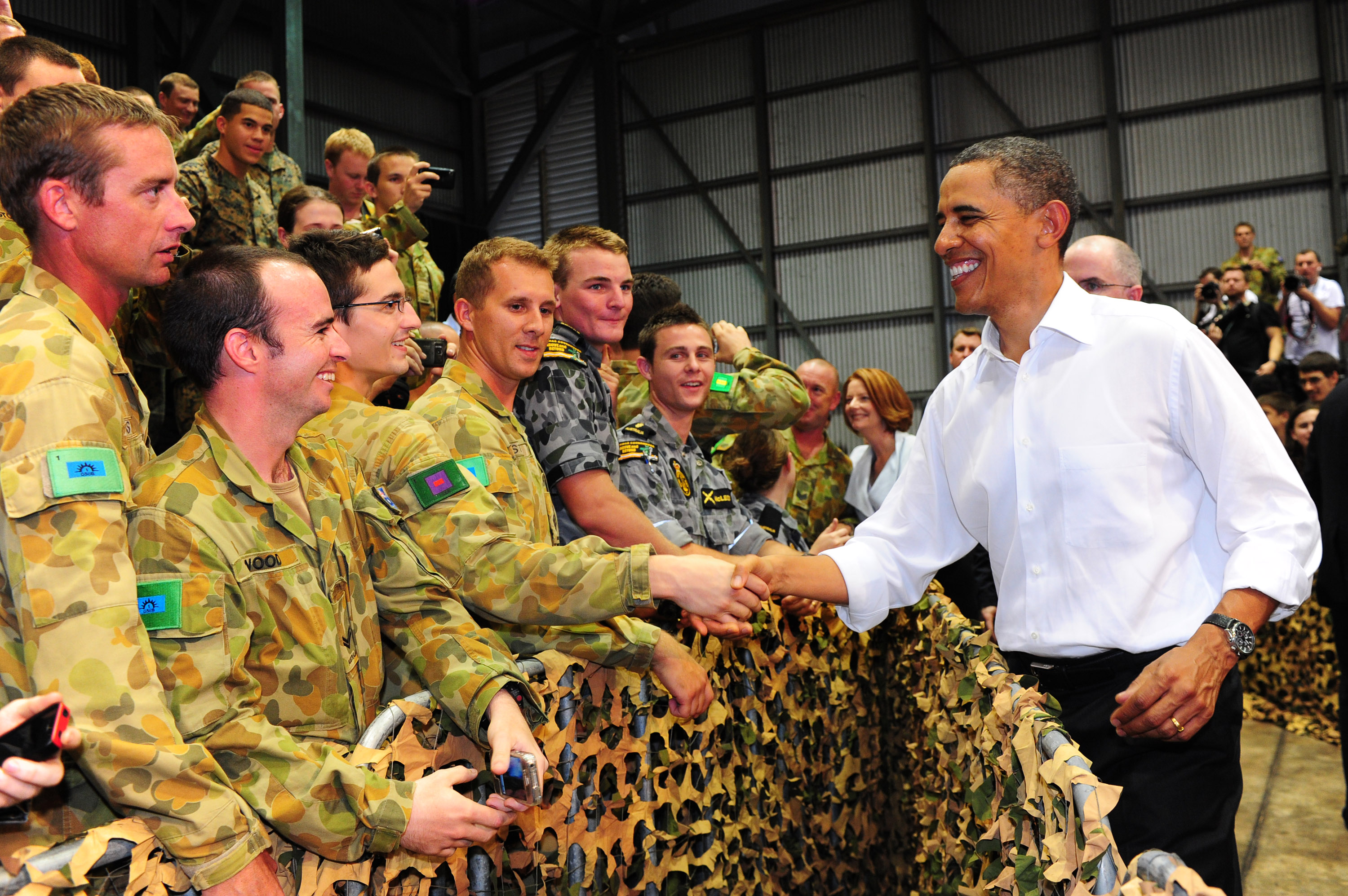A provocative piece by American journalist Eddie Walsh is currently doing the rounds, making some bold claims about how Australians under 40 view the US–Australia alliance.
Based on meetings with ‘dozens’ of Canberra diplomats, think tankers, academics and military officers, Walsh claims that the under 40s could either not see any value or were ambivalent about the US–Australia strategic relationship. He contends that many see Australia becoming a ‘lapdog’ of the United States, constrained as a consequence in our ability to deal with China.
Here at the ANU’s Strategic and Defence Studies Centre, we’re fortunate to interact with a large number of students under the age of 40. They too are comprised of a mix of public servants, think tankers and military officers. Yet Walsh’s findings seem to contrast quite sharply with what we hear from them on a daily basis.
To test our hunch, we ran a short anonymous survey amongst graduate students in our Strategic Studies program, posing the same questions that Walsh asked of his interviewees. The results contrast sharply with his claims; contrary to his findings, 96% of the students we surveyed believed that the US–Australia alliance is of value to Australia, while 68% of respondents disagreed with the proposition that Australia is becoming a lapdog of the United States.
In Walsh’s favour, 61% of respondents agreed that the alliance constrains Australia’s options in dealing with a rising China. However, 79% disagreed with the proposition that Washington is forcing Australia to make a choice between the US and China.
Responses regarding the reliability of our American ally were more finely balanced, with 43% of those surveyed agreeing that Australia can’t depend on the US to come to its defence in times of crisis. Similarly, 54% of respondents agreed with Walsh that Australia’s leaders don’t communicate America’s commitments to the alliance. It seems that the majority firmly support the notion of ‘self-reliance’ within an alliance framework, reaffirming our links with the US while at the same time supporting the desire for Australia to be able to have to room to act independently of the US when necessary.
Walsh is right, of course, that only more detailed studies can provide definitive answers on alliance attitudes amongst the younger set. Yet quite of bit of polling has already been undertaken on Australian alliance attitudes more generally, none of which provides much support for Walsh’s ‘findings’. To be sure, the Lowy Institute for International Policy’s annual poll this year revealed least support for basing American troops on Australian soil amongst the 18–29 year old demographic. But overall support for the alliance amongst the Australia public remains at a very healthy 82%.
Even in the unlikely event Walsh’s findings are correct and ours are completely off base, how much should we read into alliance apathy amongst younger Australians? By way of example, according to the previous (2012) Lowy poll only 39% of Australian 18–29 year olds were of the view that democracy is preferable to any other kind of government. Yet few would conclude from this that Australia is set to turn authoritarian.
Looking back over the history of the alliance it’s clear that public opinion has ebbed and flowed. Support for our relationship with the US slumped amongst the younger demographic during the Vietnam War and again later through the protest movement calling for nuclear disarmament. In more recent years, support for the US dipped sharply under the Presidency of George W. Bush following the invasion of Iraq.
But support for the US among the public can bounce back just as quickly, as evidenced by the surge in support for the alliance, and the US more generally, after the election of Barack Obama. Just as importantly, decades on from the Vietnam and anti-nuclear protest movements, it’s the very same generation who, now over 40, provide overwhelming support for the alliance. World views often evolve and mature with age.
Walsh’s criticism of Australian leaders for not doing enough to sell the alliance is also unfair. Any serious strategic analyst knows that a vast number of the core benefits of the alliance derive from those things policy elites can talk least about in public—the intelligence links. These are what Des Ball aptly described over a decade ago as the ‘strategic essence’ of the alliance.
It’s also worth keeping in mind that, while public opinion is often responsive to particular issues, actions or US Presidential personalities, support amongst the Australian strategic policy community for the alliance has been extraordinarily consistent since its inception. The alliance is an embedded part of Australian strategic culture and has proven exceptionally adaptive.
There’s nothing wrong, of course, with looking critically for potential challenges to the alliance. Complacency is a curse for any strategic relationship. That said, any future threat to the alliance is highly unlikely to come from younger Australians.
Brendan Taylor is head and Peter Dean is director of studies at the Strategic and Defence Studies Centre, Australian National University. Image courtesy of Department of Defence.


